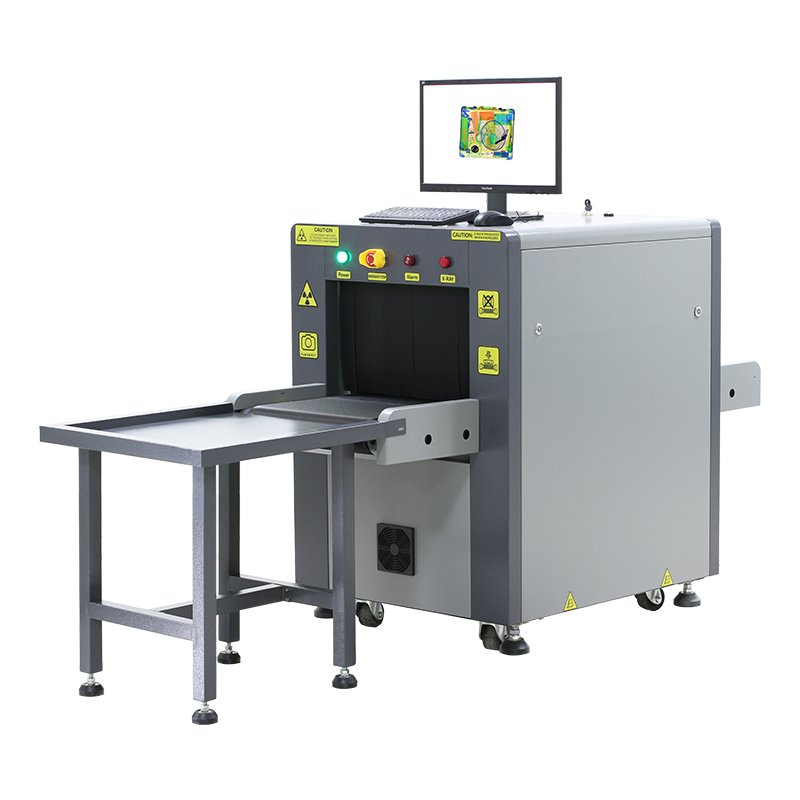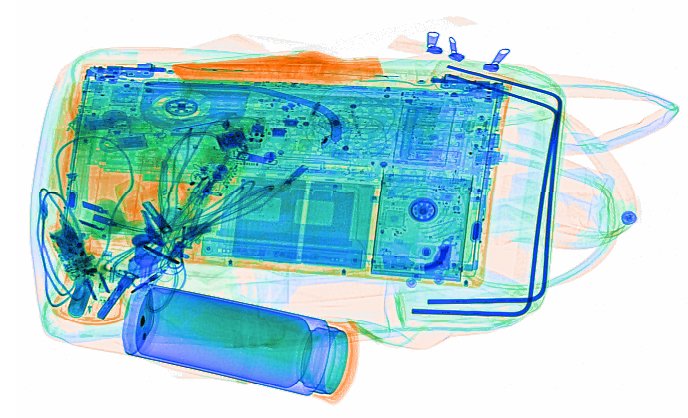The operation of the X-ray baggage scanner used for security inspection of hand luggage at the airport is controlled by the German Radiation Protection Act (strlschg) and the German radiation protection regulations (strlschv) and the competent authorities of the German states.
Even in the worst case, the radiation exposure to passengers during hand baggage inspection shall not exceed 0.2 microsieverts.
The radiation exposure of 0.2 microsieverts is equivalent to the dose received by passengers during transatlantic flight at cruise altitude within two minutes.
Baggage inspection has been established worldwide to enhance air traffic safety and is carried out through so-called X-ray baggage scanners. These X-ray baggage scanners are designed to measure only a very small number of X-rays used for internal screening outside the machine.
Airport operators and competent authorities agree that it is reasonable to use X-ray baggage scanners to check hand luggage, because the personal and collective safety obtained by using X-ray baggage scanners greatly exceeds the relatively low radiation exposure of relevant individuals.

Legal basis for hand baggage inspection
In Germany, the use of X-ray baggage scanners for security inspection of hand baggage at airports is carried out in accordance with the German aviation safety Act (luftsig), which implements regulation No. 300 / 2008 related to EU 185 / 2010.) Incorporate civil aviation safety into national laws. With regard to radiation protection, the provisions of the German Radiation Protection Act (strlschg) and the radiation protection regulations (strlschv) apply to passengers and employees.
The contents of the suitcase are visible sreened suitcases, which are screened by an X-ray baggage scanner
All EU member states have similar radiation protection laws, because each member state must implement the EU radiation protection directive as a legally binding national rule. Countries outside the EU have formulated radiation protection regulations in accordance with the recommendations of the International Atomic Energy Agency (IAEA) and the International Commission on Radiological Protection (ICRP).

X-ray baggage scanners operating hand luggage under the control of German state authorities
The operation of the X-ray baggage scanner used for safety inspection of hand luggage at the airport is subject to the provisions of the German Radiation Protection Act (strlschg) and the German radiation protection regulations (strlschv) and the supervision of the competent authorities of the German states. The X-ray baggage scanner used shall be regularly inspected by experts designated by the authority. The test results must verify that in the area around the machine where employees or other third parties may be present, the annual allowable dose limit for each public member is 1 milliSievert (1 milliSievert, including pregnant women and children), which will not be exceeded even if it exists permanently.
Therefore, it is not necessary to establish radiation protection areas. This is also the reason why employees responsible for baggage inspection are not considered as occupationally exposed personnel, so they do not need to wear dosimeters.
The radiation dose generated by baggage inspection is not even a problem for frequent flyers
Even under adverse assumptions, the radiation exposure to passengers during hand baggage inspection does not exceed 0.2 microsieverts (µ SV). Even for people who often fly, this radiation exposure is much lower than the radiation received by safety personnel who permanently exist in the area around the machine during the shift.
Every airline passenger will be permanently exposed to naturally occurring cosmic radiation during flight, which is much higher than the maximum possible radiation exposure during baggage inspection. The radiation exposure of 0.2 µ SV corresponds to the dose received by passengers during transatlantic flight at cruise altitude within two minutes. Therefore, the proportion of dose generated by baggage inspection accounts for only a fraction of the total radiation dose received during the transatlantic flight.

Use X-ray baggage scanner to check the safety of hand baggage-Safeagle
Fill out more information, We will get back to you within 24 hours.
4F.,Bldg. B, Jin Hao Pioneer Park, No.9 Dafu Industrial Zone, Aobei Community, Guanlan St., Longhua Dist., Shenzhen, R.P.China
Sales@Safeagle.com
Telephone : 86-0755-82373580
Business Phone : 86-0755-82373580
Work Time :9:00-18:30(Beijing time)